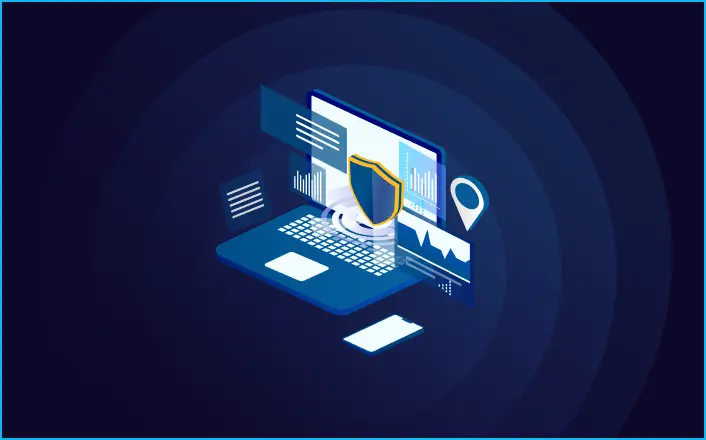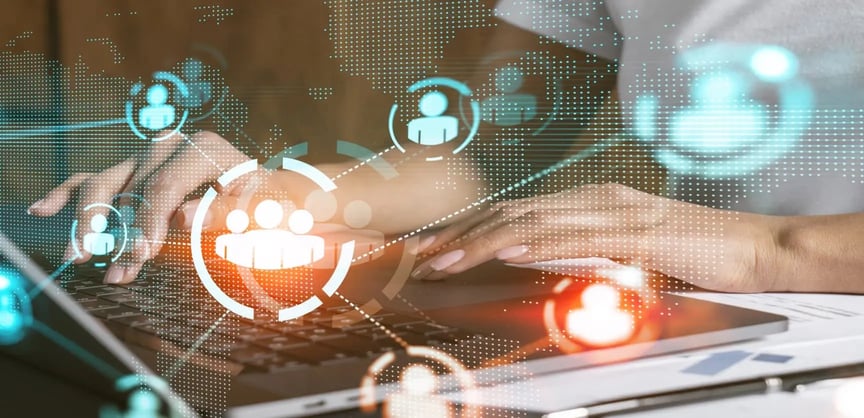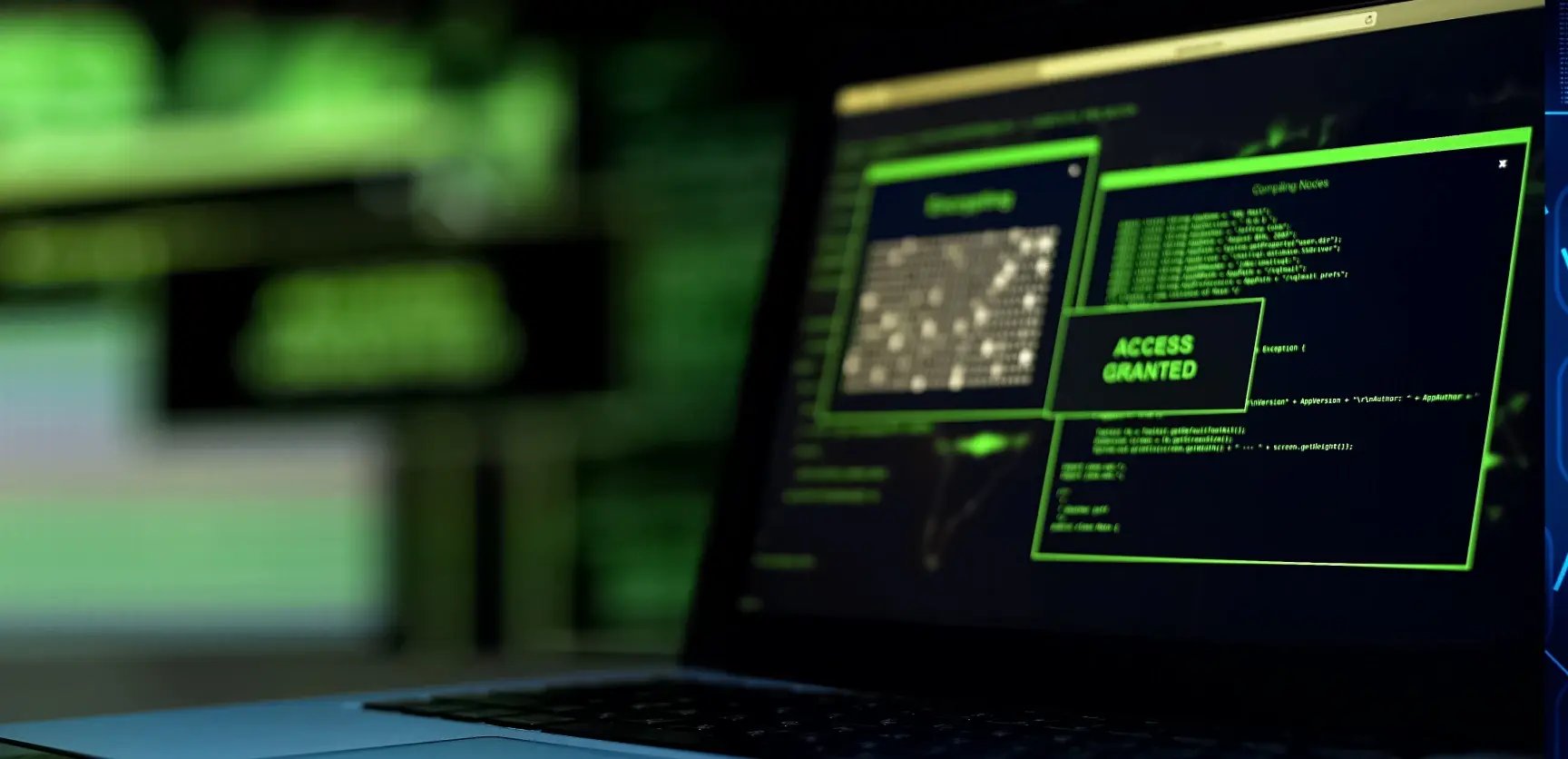- Product
-
Solution
-
By Industry
Cybersecurity solutions tailored to your industry’s needs.
-
- Resources
-
Books
Our ultimate guides and playbooks
Solution Briefs
Overview of PureDome’s functionality
-
Quizzes
Assess your cybersecurity readiness
Case Studies
PureDome customer success stories
Newsletter
Subscribe to the PureDome newsletter
-
- About Us
- Partner
- Pricing
- Download
Secure Remote Access Guidelines for Engineering: Data Protection & Collaboration
-
Sharmeen Saleem
-
30 Jan 2024
- 6 min read


The COVID-19 pandemic has led to a significant rise in remote work. However, according to data from the Ponemon Institute, this shift has had a detrimental impact on organizations' IT security, with only 44% of respondents having confidence in the effectiveness of their security measures. So, what essential information do you need to ensure secure remote access? Let's delve into it.
As the COVID-19 pandemic spread worldwide, numerous organizations began encouraging employees to work from home. Nevertheless, remote work also brings an increased susceptibility to cyber threats. Businesses and organizations of all sizes must prioritize secure remote access.
Combining this surge in threats with the growing prevalence of remote work becomes a potentially disastrous situation if adequate security measures are not in place.
This article will explore the top five factors to consider when implementing and maintaining secure remote access within organizations.
Key Considerations for Secure Remote Access for Engineers
Secure remote access entails implementing robust security solutions and tactics to create a network accessible exclusively by authorized individuals, regardless of location. It should be impervious to unauthorized access. To attain the highest level of secure remote access, organizations must focus on two key aspects: the individual employee and the enterprise.
Implement the Zero-Trust Model:
The zero-trust model operates on restricting information access to employees based solely on their specific need-to-know requirements. In other words, if employees do not require access to certain information for their jobs, they are not granted authorization to access it. Within the framework of the zero-trust model, even the most trusted employees are not granted access to information irrelevant to their roles.
Zero trust is focused on minimizing the attack surface to mitigate risks to your systems and their sensitive data. Five key areas can be controlled within a zero-trust environment:
-
Users:
Management makes decisions regarding the information each employee should access, and user verification is a prerequisite before granting network access. Furthermore, the network location's internet protocol (IP) address is concealed to enhance security. Management maintains centralized control over the entire network and the shared information through their IT personnel.
-
Devices:
The organization defines the devices employees are permitted to use for accessing sensitive data. For instance, management can stipulate that sensitive company data can only be accessed through company-issued devices. Any attempt by an employee to access this data from a non-approved device would be denied.
-
Location:
Sensitive data can be made accessible in designated physical locations only. For example, sensitive information may only be accessible at the company's headquarters. If an employee is physically present at that location, access to the information or resources can be unrestricted. This measure safeguards the data against theft or compromise through man-in-the-middle attacks, as sensitive information does not traverse insecure channels. This restriction limits the opportunities for threat actors to gain unauthorized access.
-
Content:
Beyond limiting access to data, the zero-trust model can also impose restrictions on users' access to specific websites, such as non-HTTPS sites or websites prone to phishing activities, such as gambling or adult content sites, which are often breeding grounds for malware. Restricting access to such websites ensures the security of company data.
-
Network:
Organizations can mandate that remote employees utilize a VPN for companies or other secure network solutions. Using an insecure network can expose the organization to man-in-the-middle attacks.
By implementing the zero-trust model, management can maintain confidence that no unauthorized individuals are gaining access to sensitive data. Regular audits are crucial to assess the effectiveness of this strategy over time.
Safeguard All Endpoints, Including Servers and Vital IT Infrastructure:
When establishing secure remote access, ensuring the comprehensive protection of both endpoints is imperative. Frequently, companies put in place security measures for their own devices but overlook the security of their employees' devices connecting to the network. Allowing employees to introduce their potentially insecure or infected devices into your network can pose a significant risk to the company, as the network's security is only as strong as its weakest link.
Historically, endpoint security involved the installation of antivirus software on endpoint devices. However, with the proliferation of malware threats, an organization's overall defenses must also be bolstered—relying solely on antivirus software is no longer sufficient. A robust defense system must encompass multiple layers, including potent anti-malware software, regular system patches, updates, and the deployment of network security measures like firewalls and secure authentication methods.
Let's delve into key components of endpoint security:
-
Data Security:
All company data must be shielded, whether in transit or at rest. Utilizing secure protocols such as TLS, HTTPS, FTPS, and SFTP can help safeguard data in motion, while data at rest can be protected through encrypted drives.
-
Server Security:
The server is the linchpin connecting all remote employees and housing most of an organization's data. Consequently, it must be fortified with firewalls and anti-malware software. Regular updates to server hardware are crucial to mitigate vulnerabilities that patches aim to rectify. Access to the server should be granted exclusively to individuals who require it to perform their job duties.
-
Cloud Security:
Access to data stored in the cloud should adhere to the zero-trust model, granting access only after rigorous and continuous verification of all users and devices. When opting for third-party cloud providers, it's essential to thoroughly evaluate their security features before entering into contracts. Many cloud service providers offer additional security features, including penetration testing, perimeter firewalls, intrusion detection systems, and data-at-rest encryption, fortifying your data against cyber threats.
-
Website Security:
Every organization's website should possess a valid TLS certificate to safeguard sensitive company and customer data. If your organization handles online payments or collects customer data, it bears a legal responsibility to protect this information. Regulations like GDPR, CCPA, HIPAA, and PCI DSS are designed to uphold citizens' privacy. Noncompliance resulting in a data breach can lead to fines, lawsuits, damage to reputation, and other substantial consequences.
-
Threat Detection:
Regular threat detection assessments should be conducted within your network systems to identify and eliminate potential threats. In-house teams or external security experts can carry out these assessments.
-
Secure Authentication:
Secure authentication serves as the primary defense against cyberattacks. Insufficient authentication measures can leave your network and systems vulnerable, even with all other safeguards. Follow these guidelines to strengthen authentication for your networks:
- Utilize stronger and lengthier passwords incorporating special characters, numbers, and capital letters.
- Consider using passphrases instead of passwords, as they are easier to remember and use.
- Implement multi-factor authentication (MFA) for account logins, which offers enhanced security compared to passwords or passphrases.
- Explore passwordless authentication, which combines ownership and inherence factors (something you have and something you are) for robust security.
Device Security:
Employees' devices, including IoT, must be equipped with adequate malware protection, firewalls, and endpoint security solutions. Implementing whitelists (allowlists) for approved applications on company devices while blocking the installation of unauthorized apps can enhance device security. Additionally, restrict the use of secure remote desktop applications to administrative users.
Mobile devices are often less rigorously secured than laptops and desktops, making them potential targets for cybercriminals. Mobile devices are frequently employed as the second factor of authentication for MFA. In the event of mobile loss or theft, measures should be taken to secure accounts before criminals can exploit them. That way, you can ensure secure connectivity for employees.
Risk Assessment:
Even after implementing these measures, continuous assessment of your organization's cybersecurity risk remains essential. This process involves routine audits of network activities, software, and hardware to identify evolving issues and potential threats within the organization.

Promote Employee Awareness of Cybersecurity:
Enhancing cybersecurity awareness entails educating your employees to be mindful of their actions when operating online. Regularly refresh training and monitor employees' compliance with company policies is essential. Employee security training should encompass:
- Instructions on maintaining strong password practices.
- Familiarity with data privacy and confidentiality policies.
- Guidelines on selecting and securing devices.
- Information on the secure updating of devices and software.
- The utilization of multi-factor authentication (MFA) for accounts and devices.
- Techniques for identifying social engineering and phishing attempts, suspicious websites, and other threats.
Establish a Secure Network Connection:
Another effective measure to thwart cybercriminals from infiltrating your network involves using a business VPN to increase the network security of your business and remote teams. This service enables remote employees to establish a secure connection with your network. The current landscape underscores the heightened importance of securing remotely connected devices. Therefore, when we refer to security measures, we also encompass the security of the remote employee network.
Network security encompasses more than just safeguarding data in transit and extends to the following aspects:
Implement Software Controls:
Software controls involve the procurement, implementation, regular updates, and retirement of software in alignment with the organization's security requirements. Software must remain up-to-date to mitigate security risks, as outdated software often harbors vulnerabilities that cybercriminals are eager to exploit.
In cases where employees use their devices (such as in Bring Your Own Device, or BYOD environments), only approved applications and websites should be permitted on these devices. Insecure applications and websites can compromise the device, subsequently jeopardizing the security of the company's network.
Establish Hardware Controls:
Hardware controls protect routers, cables, devices, and all other hardware the organization utilizes, whether within office premises or at remote locations. Hardware must be procured and maintained exclusively through authorized vendors to preserve the system's integrity. Special attention should be paid to implementing robust security measures for devices utilized by remote employees.
Institute Administrative Controls:
Administrative controls play a pivotal role in establishing secure remote access. Management should authenticate all users, carefully delineate the information accessible to each user, and specify the software, hardware, and networks in use. The IT department should monitor network adherence to policy directives and swiftly rectify discrepancies. Network Access Control (NAC) can be implemented to prevent unauthorized individuals from accessing the network.
Remote employees should be prohibited from using unsecured networks, such as those in coffee shops, hotels, restaurants, or libraries. Such open networks lack stringent access controls and can leave your company exposed when malicious actors gain entry to your network via a remote employee's device using an insecure connection. Instead, the company should provide VPN for teams access to meet secure network requirements.
Furthermore, providing practical training to employees is essential, emphasizing the significance of security procedures. In their daily routines, employees should diligently adhere to the organization's established standards for passwords, devices, network access, software, and hardware. Clear and well-defined rules should govern these aspects within the organization.
Wrapping Up
Remote work is undoubtedly here to stay, and it's imperative that all members of an organization, including engineers, comprehend their responsibilities in maintaining the security of the organization's network, devices, and data when working remotely.
Ensuring a higher level of secure remote access is achievable when everyone, especially engineers, comprehends and adheres to best practices. The provided recommendations below can assist you in devising a robust strategy for establishing a secure infrastructure, thereby safeguarding your organization and its engineers from cyber threats.
Frequently Asked Questions
What is secure remote access, and why is it crucial for engineering professionals?
Secure remote access involves establishing a protected connection to a network from a remote location. Engineers need to ensure data security, collaborate effectively, and maintain productivity while working remotely.
What are the primary advantages of implementing secure remote access solutions in engineering environments?
A secure remote access solution enhances data protection, facilitates seamless collaboration, supports flexible work arrangements, and enables engineers to access critical resources securely from anywhere.
What security measures should engineers consider when accessing and transmitting sensitive engineering data remotely?
Engineers should prioritize encryption, multi-factor authentication, secure file sharing, and regular software updates to protect engineering data during remote access.
What best practices should engineering professionals follow to ensure secure remote access?
Engineers should use a trusted business VPN like PureDome, adhere to strong password policies, be cautious with public Wi-Fi, and regularly update their cybersecurity knowledge to maintain secure remote access.
Stay up to date with the latest cybersecurity insights and best practices
Get the latest information, stories, and resources in your inbox. Subscribe for monthly updates.
Securing 1000+ Businesses Across The World